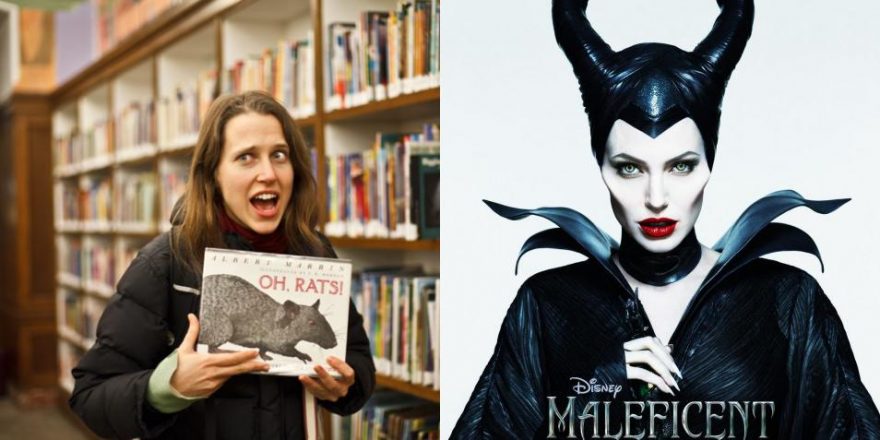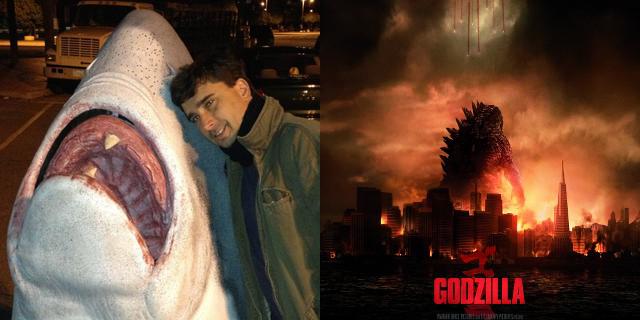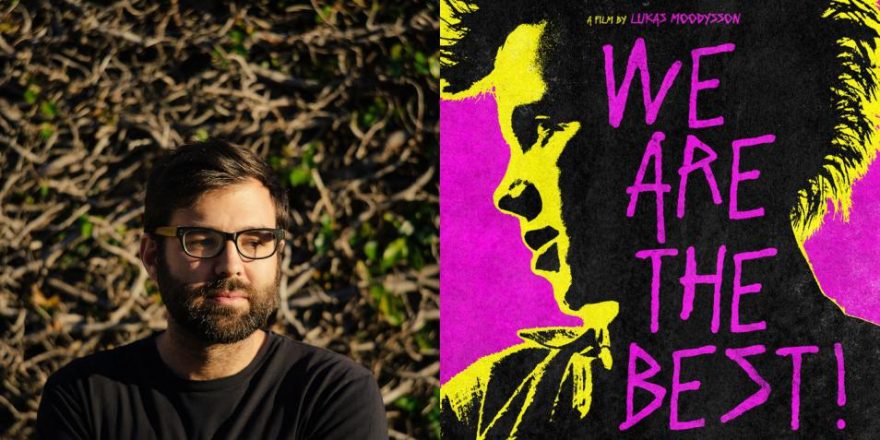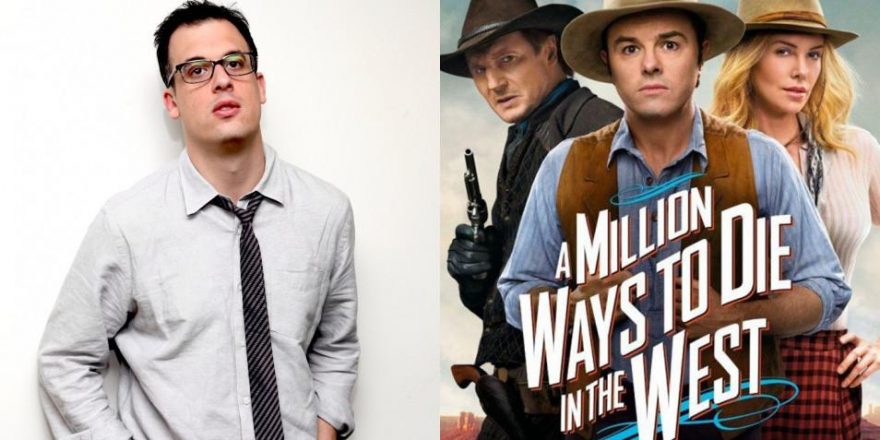I argued with my boyfriend about Maleficent and my feelings about it all weekend. The best way I found of expressing my take on it is this –
Two things make a film a film:
1. What the film is communicating.
2. How the film is communicating that.
And I would argue that the how is more important.
The “message” of Maleficent – and there definitely is one – is that women are complicated.
But the movie, unable to make truly original choices, does not fully support that thesis.
Disney’s Maleficent – which stars Angelina Jolie, in the title role, and Elle Fanning, as Aurora – is a retelling of Disney’s Sleeping Beauty from the point of view of the fallen fairy who curses the princess. It opens with a run-through of 20 years of Maleficent’s life – growing up in a fairy world, discovering a new friend in a human, falling in love with this human, being betrayed by this human, and becoming… Maleficent. This is all rushed through with a lot of voiceover, along with some battle sequences that don’t mean much (we barely know the characters).
As a filmmaker who spends a long time editing (and thus writing and rewriting) her films, I kept thinking, how could the opening of the film have been better? I recoil often at openings like this one that charge us through many years of a life in three to five minutes… I find this a sort of crude and, for me, ineffective way of making us care about characters. I didn’t like it in Up, and I didn’t like it in Maleficent. I think the power of a film is the power of emotion – and the power of caring about the characters as if we ARE them, not as if we are pitying them…. We have to become the characters to care about their experience, in my opinion.
I would propose this: Start Maleficent with six or eight or 11 minutes of a conversation between her and this man she loves… once they’re already adults. Their trust is established – their conversation is beautiful, intimate, real. At the end of said conversation – after a clear inner conflict in him and a simple love in her – he betrays her. This would be the kind of opening that surprises and bends and deepens our experience. This would be an experience.
The opening 20 minutes suggest that Maleficent will be slow, hard to manage, devoid of humor and terribly written, and yet, once Maleficent lives up to her name, she and the film are much more enjoyable to watch. And despite all its direct pointing towards predictability, Maleficent manages to be sort of unpredictable.
So, we come to the crux of the Maleficent dilemma: the how versus the what.
When I look back at the films of my childhood, some highlights (i.e., I stood on the couch and danced along to them) included Mannequin, Chipmunk Adventure and Madonna’s Immaculate Collection tour music videos. These all feature sexy, liberated women in song-like atmospheres kicking ass. And granted, not all of those films were “good.” So, will Maleficent have an impact and inspire young girls to grow into sexy, liberated women? Maybe. Is this a good film about a sexy, liberated woman? Ennnnhhhh….
The highlights of the film are its departures from the original Sleeping Beauty story: Maleficent is not purely maleficent; a woman who delights in the demise of her ex-lover also makes sure his daughter (whom she cursed) is safe, and later, happy. In a world of kids’ films with villains who are all and only that, a film with a character who is both villain and hero is – important.
The disappointments of Maleficent lie in the ways it doesn’t depart from the original story. While the climactic moments work because Disney’s original Sleeping Beauty worked, a viewer who has seen both might feel cheated…. Something is different in live action than it is in animation, and there is a power in letting that difference emerge. And filling Maleficent’s frame with green smoke while Jolie barks ominously, “Before the sun sets on her sixteenth birthday,” just makes us feel like we should probably go watch the original instead. Because it was original.
Some glorious moments point to what kind of experience the film could have been. At the beginning, the young girl Maleficent drops a stolen stone back into the water it came from, and the film features a POV from the water itself – embracing back one of its own. It is an unusual and incredibly effective sensing of the energy of the woodland world Maleficent inhabits. This made me hope that the film would feature more of this – an enjoyment of the world around Maleficent… an enjoyment of the world itself.
But, again: the how.
The framing of the shots – and of the jokes – repeats, and repeats. This sort of deadness is echoed also in the characters, who are literally dragged around skyborne in a sleep-like trance by Maleficent and her crow accomplice. This would feel funnier if we the audience weren’t also being dragged along. A film that invites participation and asks its audience to make choices about how to feel, about what to look at, is a film that surprises and delights. A film ruled by big sound effects and countless close-ups dances fast enough to be watchable… but isn’t a call to wonder.
Now, I am an adult. And this movie is definitely for kids. Things are much more beautiful when we are children. Surprises are bigger. The unexpected truly is that, and we view people wearing giant fairy costumes at Disney World as if they really are fairies, come to visit just us at this very moment.
One of my favorite films of all time – The Last Unicorn – has a triad of heroes who are all imperfect and hunting and confused and bewildered and make good decisions and then bad ones. That kind of nuance was a diamond in the cartoons and films of my childhood. I felt exhilarated. I felt I was learning something. I was understanding a truth about the complicated nature of adulthood that no one had ever made available to me before. Though Maleficent asks you to see beyond a woman’s suffering into her awakened compassion, the film does not have that kind of nuance – the sense of discovery that a child learning the ideas of good and evil, of learning regret, might actually grow from encountering. It’s a film that tells you what to feel, and you sort of feel it.
And herein lies the confusion in and about this film. Its how is… rushed, unfinished, a vision half-realized clearly under a studio thumb.
But after seeing Frozen and feeling dark and critical of its naiveté, I remember waking up in the middle of the night two weeks later with a vivid memory of the ending – and I cried. I cried for me, and my sister, and for all the sisters in the world who had discovered something new in their love for each other through that film.
Maleficent doesn’t have the edifying surprise that Frozen has (perhaps because Frozen had it first), but it is an interesting striving toward a truth we desperately need more of: that women are complicated, powerful, loving and hateful at once – and that, that I can support in any movie.







